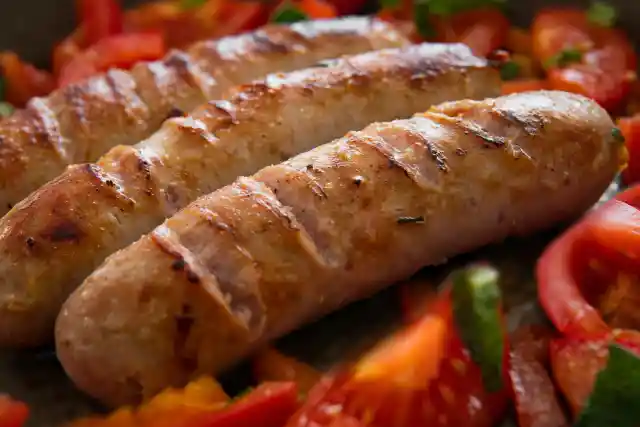Versatile Sausage Delights
There are innumerable dishes that are universal in cuisines around the globe, and one such example is sausages. Almost every culture has its own version of the sausage, which can range from spicy to sweet. Depending on where you eat them, sausages have different shapes, sizes, and flavors, but they all share the same basic attributes.


Sausage is certainly a constant in your diet, whether you grill it and eat it on a bun, fry it and use it in some of your favorite dishes, or eat it for breakfast. Surprisingly, there are hundreds of different sausage variants to be found in different parts of the world. Let's look at some of the most popular types.
Bratwurst - Germany
There is no doubt that there is an abundance of sausage alternatives in Germany. Yet with so many options, bratwurst is still the undisputed favorite.


Although pork is commonly used, beef can be substituted as desired. Taken to the next level, bratwurst is often served with fries, curry ketchup, and other fast food favorites.
Falukorv - Sweden
Falukorv, or falu sausage, is a staple in Sweden. It’s been around since the 16th century, so it’s safe to say that Swedes are all about it.


Falukorv is usually made with beef or pork, along with potato starch, pork fat, spices, sugar, and onions. It’s also cooked before it’s packaged, so you can eat it right out of the bag.
Chorizo - Spain
Spanish chorizo was born out of the Spanish exploration of the Americas. While curing meat and the usage of pork, the chorizo's primary component, were both widespread in Spain, one element was missing.


This was paprika, an essential component of chorizo. Paprika is a blend of chili peppers that can only be found in the Americas. Spanish chorizo was made when people started bringing the peppers back over the Atlantic and mixing them with cured pork.
Sucuk - Turkey
Sucuk, sometimes known as sujuk, is a semi-dry, hot, high-fat sausage that is common in Middle Eastern, Balkan, and Central Asian cuisines. Traditional ingredients include ground beef and seasonings including cumin, salt, paprika, and garlic.


Before eating, the sausage needs to be dried for at least three weeks. While it can be sliced thinly and eaten cold, it is most often fried and served with eggs and veggies.
Longganisa - Philippines
Longganisa is a sort of Filipino sausage. Longganisa sounds similar to longaniza, an Argentine sausage. Spain colonized both of these regions, which is why both of these nations have sausages with identical names.


Although there are many distinct kinds of longganisa in the Philippines, pig, chicken, or beef are the three most common proteins. This sausage is a popular complement to a variety of breakfast recipes. It is, nevertheless, regarded as a fantastic accompaniment to a luncheon or dinner.
Boerewors - South Africa
The spiral boerewors is a classic component of any excellent braai (barbecue with charcoal or wood, never gas), which is a social ritual that is almost holy for South Africans.


The word "farmer sausage" comes from Afrikaans and refers to a food that must be at least 90% meat, always beef, and at least 10% each of lamb, pig, or a combination of the two. Fat should not exceed 30% of the meat composition, and there should be no offal or "mechanically recovered" meat pulp.
Andouille - France
Andouille is a hot, smoked sausage that originated in France but is most recognized for its use in Cajun cooking, namely in the dishes jambalaya and gumbo. The sausage originated in the Andouillette region. This original variety of sausage was and still is quite spicy and coarse-grained.


The flavor of southern andouille is very distinct compared to the original andouillette. It is normally cooked with ground pork, onions, and a variety of spices and is strongly spiced and smoked. If you want to add a little heat, you can also use it in any dish that calls for smoked sausage.
Sundae - South Korea
South Korean sausage known as soondae is also known as sundae. It is a particular variety of blood sausage made with rice, glass noodles, and pig's blood. Several regional varieties can include additional ingredients like fish, squid, bean sprouts, soybean paste, scallions, barley, or kimchi.


The texture of Sundae sausage differs from what you would often think of with sausage due to its components. Although the mixture of ingredients makes it rather thick, the noodles and rice give it a more gelatinous consistency.
Sai Ua - Thailand
Sai Ua is translated as "stuffed intestine." Sai Ua's highly fragrant flavor is a result of the local ingredients used to prepare it. Sai Ua dishes typically use pork protein in addition to red curry paste, lemongrass, turmeric, galangal, and makrut lime leaves.


Sai Ua has a rougher texture than most other forms of sausage since it is created with minced pig. One of the most popular ways to consume it is on the grill. It is usually cooked with sticky rice and eaten as an appetizer in Thailand.
Kielbasa - Poland
Any Polish meat sausage, whether made of pig, cattle, lamb, chicken, or any other meat, is referred to as kielbasa. While different kinds of kielbasa have distinctive tastes of their own, they often contain the same blend of seasonings and robust herbs as bratwurst.


The smooth, almost glossy exterior of kielbasa is its most distinctive feature; the sausage meat is tidily enclosed in a sturdy casing.